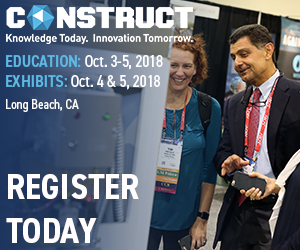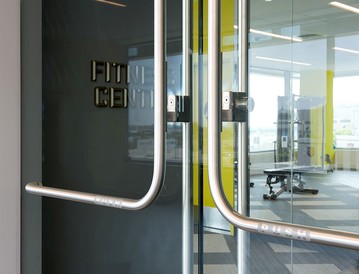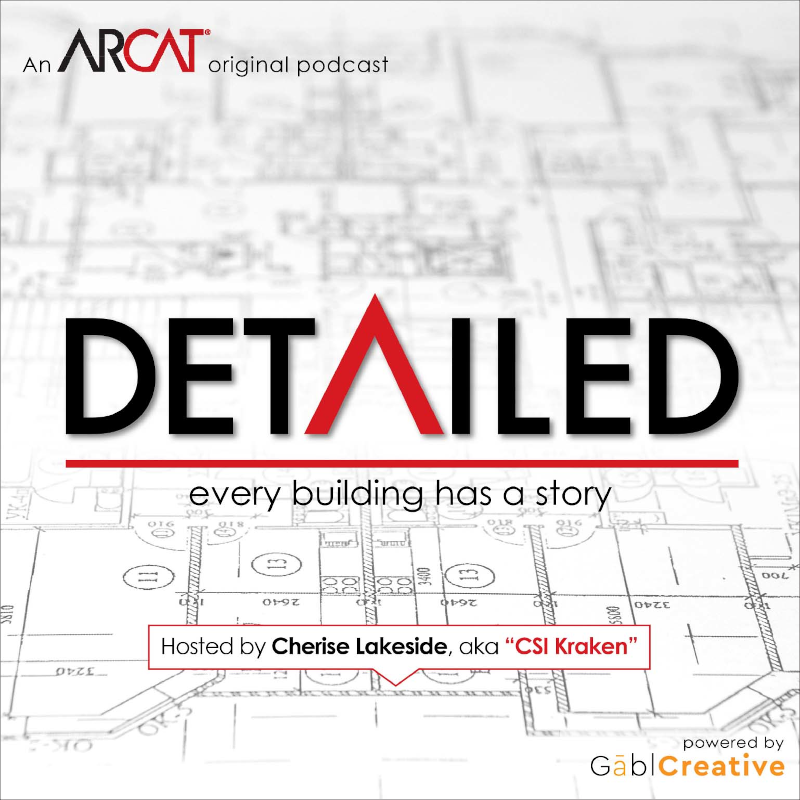|
Contributed by Eric D. Lussier & Cherise Lakeside Registration is now open for CONSTRUCT 2018, our MUST attend construction industry conference of the year.
The co-founders of Let's Fix Construction, Eric D. Lussier and Cherise Lakeside met at CONSTRUCT in Phoenix in 2012 and have returned in each successive year since. AT CONSTRUCT 2017 in Providence, RI, Eric and Cherise were invited to participate on the CONSTRUCT Education Advisory Council with a group of other industry professionals. This effort has continued for the 2018 Conference and much work has been done to put together a dynamic program for the conference this coming October 3-5, 2018 in Long Beach, CA. In addition to the Education Advisory Council, CONSTRUCT 2018 will be keeping Eric and Cherise busy on all three days of the conference. On Day 1, they are both involved in the fourth annual Young Professionals Program, Cherise will be moderating the Archispeak Interactive Luncheon titled 'Real Talk About Challenges, Opportunities & Innovations Surrounding AEC Teams' and later that day, the Let's Fix Construction interactive problem-solving workshop will return for a second consecutive year. On day 2, Eric and Cherise will co-host a new program 'Facing Danger: Public Speaking for Non-Public Speakers' and the evening will conclude with the 2nd annual Let’s Fix Construction 'Partners & Pints' party, sponsored by ClarkDietrich. Day 3 will feature a new addition to CONSTRUCT in 2018, as Cherise will moderate the 'Millennial Power Panel' session, with more details below. While Cherise and Eric (Let’s Fix Construction) will be busy this year at CONSTRUCT in their continuing total world domination effort, there are a host of great educational sessions from many well respected members of the AEC Community in addition to project tours, networking events, parties, show floor education, product information and much more. Check out the official CONSTRUCT Press Release below and register soon and save up to $230 with Early Bird Pricing when you register by 06/13. CONSTRUCT, the only national show dedicated to commercial building teams that spec and source materials, has announced a slight change in the show’s format for 2018. CONSTRUCT is introducing Thought Leader and Power Panel Sessions this year, replacing the Keynote Speaker and Game Changer Speaker. These four new sessions will feature key industry leaders speaking on trending topics that are affecting the AEC industry today. The Thought Leader speakers include Rosa T. Sheng, Brok Howard, and Paul Doherty. The Power Panel session will involve successful millennial professionals. Rosa T. Sheng, FAIA, LEED AP BD+C, is a Principal and Director of Equity, Diversity, Inclusion at SmithGroupJJR and AIA SF President 2018. She is also the Founding Chair for Equity by Design, which has launched a national movement for achieving equitable practice and design in architecture since 2018. Rosa’s session, titled ‘Why Equity Matters for everyone – A New Value Proposition for Design', will frame the discussion on how we can adopt a culture of equity, diversity and inclusion. Brok Howard, is a Technical Account Manager at dRofus Inc. where he leads the effort in implementation, training, and support for all North America. He has over 20 years of experience in the AEC industry, including teaching at Washington University in St. Louis and as a BIM Manager at HOK. Brok’s session titled 'Knowledge Transfer – An Ethical Responsibility for AEC Professionals', will focus on our responsibility and duty to prepare the next generation with the knowledge we share. Paul Doherty, the President and CEO of the Digit Group, is an award-winning architect, specifier, and adviser to Fortune 500 organizations and government agencies. He is also one of the co-founders of the AEC Hackathon. His current work is focused on Smart City real estate developments for the USA and abroad. Paul’s session titled 'The Digital Transformation of Specifications' will discuss a new age of specifications driving digital transformations that could only have been dreamed about just a few years ago.
1 Comment
Contributed by Justin Havre The blockchain is a type of decentralized public ledger that makes it easier to organize, verify, and protect information. While it's mainly been associated with cryptocurrencies like Bitcoin, the technology has much more potential than that. It's been theoretically applied to almost every sector of the economy and is slowly transitioning from the possible to the practical.
Blockchain may be able to tighten up construction deadlines, prevent fraud, and cut out the middlemen all while encouraging new ideas and partnerships. What the Blockchain Does The blockchain is a revolutionary way to input information and secure it from anyone who shouldn't have access to it. Not only can it keep financial transactions safe from prying eyes, but it can also streamline construction projects with multiple moving parts. Between investors, developers, and construction workers, it's easy for information to slip through the cracks. But the blockchain isn't like any other project management tool anyone's ever used before. Using Smart Contracts A smart contract is a series of if/then statements that are set up according to the rules of each project. The blockchain is dominated by the logistics of the programmer, so it can be adapted to small and large projects alike. Construction companies can use these smart contracts to essentially control every aspect of the project. So, if a painter needs to wait for an inspector to first check the drywall before painting, there will be an unhackable log where they can plainly see whether or not an inspector has held up their end of the bargain. Advancing Technology The blockchain makes it easier than ever for construction crews to keep up with new technology on the scene. For example, Building Information Modeling (BIM) tools may have helped to improve precision during construction, but it's also led to a lot of confusion on the actual job site. When changes can be made faster than ever, workers need a single source to receive updates in real-time. The blockchain can update everyone that the developers want a new color of paint in the bathroom or slightly different dimensions in the master bathroom. Finding the Right People There is a lot of segregation in construction, which leads to the isolation of ideas and talent. This separation is (in part) due to the fact that it's difficult to both find and coordinate with the right partners. Much like with picking the right real estate agent to work with, if there isn't an easy way to assess a company's reputation, it can lead to undue competition. The blockchain can both facilitate coordination and inspire partnerships between companies with different specialties. This type of cross-pollination of skills can lead to some truly innovative results in the industry. Contributed by Al Eini The Basics: Maintain Aesthetics, Ensure Safety
Life safety and egress are critical considerations in every building so it comes as no surprise that panic devices play a significant role in the design and installation of entrance systems. Panic devices come in several styles for various door types. With all-glass entrances growing in popularity, however, tubular panic devices are being specified more frequently, particularly in high-end applications. These elegant systems offer maximum transparency and a contemporary look. Although panic hardware is nothing new, tubular panics and glass doors present unique challenges. For example, all of the mechanics of a standard panic need to be concealed in a sleeker, more attractive design while meeting safety standards. Issues with glass templates and sizing, and hardware compatibility can arise. For successful tubular panic handle and glass door installations, key hardware and overall entrance design considerations must be taken into account, as well as specification criteria that will ensure door openings comply with life safety codes. Overcoming the challenges associated with tubular panics will lead to safe and secure all-glass entrances that meet the design intent. First, Know the Code Both the International Building Code (IBC) and NFPA 101 – Life Safety Code require panic devices to be listed in accordance with UL 305 – Standard for Panic Hardware. The Builders Hardware Manufacturers Association (BHMA) also has its own standard for panic hardware: ANSI/BHMA A156.3 – Exit Devices. IBC and NFPA 101 panic device requirements apply to most jurisdictions. According to the IBC, panic devices are required on doors when Assembly Occupancies have a load of 50 or more people; Educational Occupancies have a load of 50 or more people; and when High Hazard Occupancies have any occupant load. NFPA 101 requires panic devices on doors where Assembly Occupancies have a load of 100 or more people; Educational Occupancies have a load of 100 or more people; Day Care Occupancies have a load of 100 or more people; and where High Hazard Occupancies have a load of 5 or more people. Other key code requirements include:
Be aware that there are often exceptions, and every jurisdiction adopts specific code requirements for panic hardware. That’s why it’s very important to consult the Authority Having Jurisdiction early on in the project. Failing to do so can lead to compliance issues, which translates to costly and time-consuming reworks. Contributed by Dean Moilanen The finishing trades most often come into play at the end of the construction project. In many cases, the end result is decorative, ornamental, and breathes life into the vision of the finished project. The installation of ceramic tile and natural stone is a finishing trade which must deliver on an aesthetically pleasing expectation AND be a resilient, long lasting, wearing surface. Unfortunately, all too often, critical installation methods and standards are not followed, with the end result culminating in failure.
Ironically, this uptick in installation failure comes at a time when the combined forces of the tile and stone industry are proactively reaching out to offer training and certification for contractors and installers. The National Tile Contractors Association (NTCA), The Ceramic Tile Education Foundation (CTEF), and Advanced Certifications for Tile Installers (ACT) are just some of the organizations offering comprehensive education and training. The downturn in the construction industry, which occurred during the last recession, saw a vast outflow of qualified installers from the industry. The challenge still remains to locate and train individuals to address the demands of a rebounding trade. This challenge has played a role in some of the nagging failure issues that continue to occur. These failures are based more on a lack of installer knowledge and competence, then deliberate shoddy practices. Simply put, yes, you “really have to do that”, follow the ANSI or ASTM standard that is, if you want to steer clear of problems and failures. Listed below are just two of the concerns which need to be addressed in today’s ceramic tile and stone industry. If there is one overwhelming area of concern when it comes to the success or failure of a tile or stone installation, it would be the adequate bonding of the tile or stone to the substrate. ANSI A108.5-2.2.2 outlines the process of achieving the coverage needed to bond tile or stone to the wall or floor substrate. Summarized, the adhesive used to bond the tile or stone must be applied uniformly and evenly to the substrate; no “rainbow arches of adhesive”, no “five spotting” or daubs of adhesive placed in irregular fashion on the substrate, serving as “targets” for bonding of tile. Minimum coverage required (the amount of bonding agent affixed to the underside of the tile) can range from 80% in “dry” areas to 95% in wet areas. Wet area bonding has heightened concern, as any voids in the setting bed can serve to trap moisture and result in microbial growth (mold). The lack of adequate bond between the substrate and tile or stone finished surfaces is the culprit in all too many failures. Wet area waterproofing concerns continue to plague tile and stone installations as well. Of growing concern is the need for tile and stone shower detail to withstand vapor migration, as steam/vapor (resulting from shower usage) migrates to behind the tiled shower wall. The moisture damages the interior wall details and oftentimes finds a food source that contributes to mold. ASTM E96 Procedure E is a performance standard for waterproof membrane systems, which when called out in specifications ensures a “steam room” level of performance on the shower walls of these wet areas. Typically, the products meeting this standard are applied to the outer face of a suitable wall substrate in shower details, with the tile then bonded to the membrane. When assessing the viability of product to be used with regard to this ASTM standard, be sure to source independent third party testing for validating a product’s performance claims. There is now language and documentation available to architects and specification writers which calls for qualified labor, and is available from the National Tile Contractors Association. Implementation of this language would aid industry efforts to improve installation quality. |
AboutLet's Fix Construction is an avenue to offer creative solutions, separate myths from facts and erase misconceptions about the architecture, engineering and construction (AEC) industry. Check out Cherise's latest podcast
Get blog post notifications hereArchives
March 2022
Categories
All
|





 RSS Feed
RSS Feed
